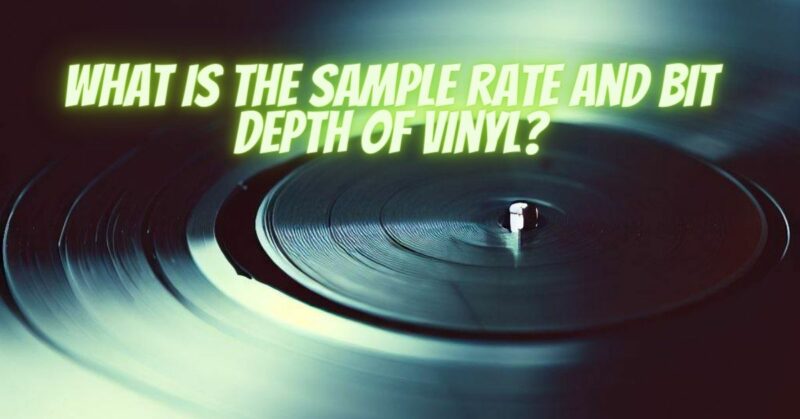Vinyl records, known for their distinct warmth and analog charm, continue to captivate audiophiles and music enthusiasts worldwide. While vinyl is fundamentally an analog format, the vinyl production process often intersects with the digital realm. In this article, we’ll delve into the concepts of sample rate and bit depth as they relate to vinyl records, uncovering the role of digital technology in the analog world of vinyl.
Understanding Sample Rate and Bit Depth
- Sample Rate: Sample rate, typically measured in Hertz (Hz), is the number of audio samples captured per second during analog-to-digital conversion. It determines the highest frequency that can be accurately represented in a digital audio file. Common sample rates include 44.1 kHz (CD quality), 48 kHz (standard for video and digital audio workstations), and higher rates like 96 kHz or 192 kHz for high-resolution audio.
- Bit Depth: Bit depth defines the precision of the digital representation of audio amplitude. It indicates the number of bits used to represent each sample’s amplitude. Common bit depths include 16-bit (CD quality) and 24-bit (high-resolution audio). A higher bit depth allows for a greater dynamic range and more precise representation of audio levels.
Sample Rate and Bit Depth in Vinyl Production
While vinyl records are primarily analog, digital technology comes into play during the vinyl production process. Here’s how sample rate and bit depth are relevant:
- Digitization for Vinyl Cutting: To create the lacquer master used in vinyl pressing, the analog audio must be digitized. This is done at a high sample rate and bit depth to ensure accurate representation of the analog source. Often, 24-bit/96 kHz or 24-bit/192 kHz digital files are used for vinyl mastering.
- Preserving Dynamic Range: Vinyl records have limited dynamic range compared to digital formats. Using higher bit depths during digitization helps preserve the dynamic range of the analog source, ensuring that soft and loud passages are accurately represented without distortion.
- Reducing Noise Floor: Vinyl records inherently have a higher noise floor compared to digital formats. By using a high bit depth, engineers can maintain a low noise floor, preventing noise from becoming noticeable during playback.
- Editing and Post-Processing: High bit depth files offer greater precision during editing and post-processing, allowing engineers to make precise adjustments without introducing artifacts or compromising audio quality.
- Compatibility: Despite the high-resolution digitization during mastering, the final vinyl product is still an analog medium. Vinyl records do not have a sample rate or bit depth like digital files; they are entirely analog in their grooves.
In the world of vinyl records, sample rate and bit depth intersect with analog technology to create a bridge between the analog source material and the physical vinyl medium. While high-resolution digital files are used during mastering to ensure accuracy and quality, vinyl records themselves do not possess sample rates or bit depths. Instead, they capture the essence of analog music, celebrated for their warmth and character, inviting listeners to savor the unique and timeless experience of vinyl playback.

